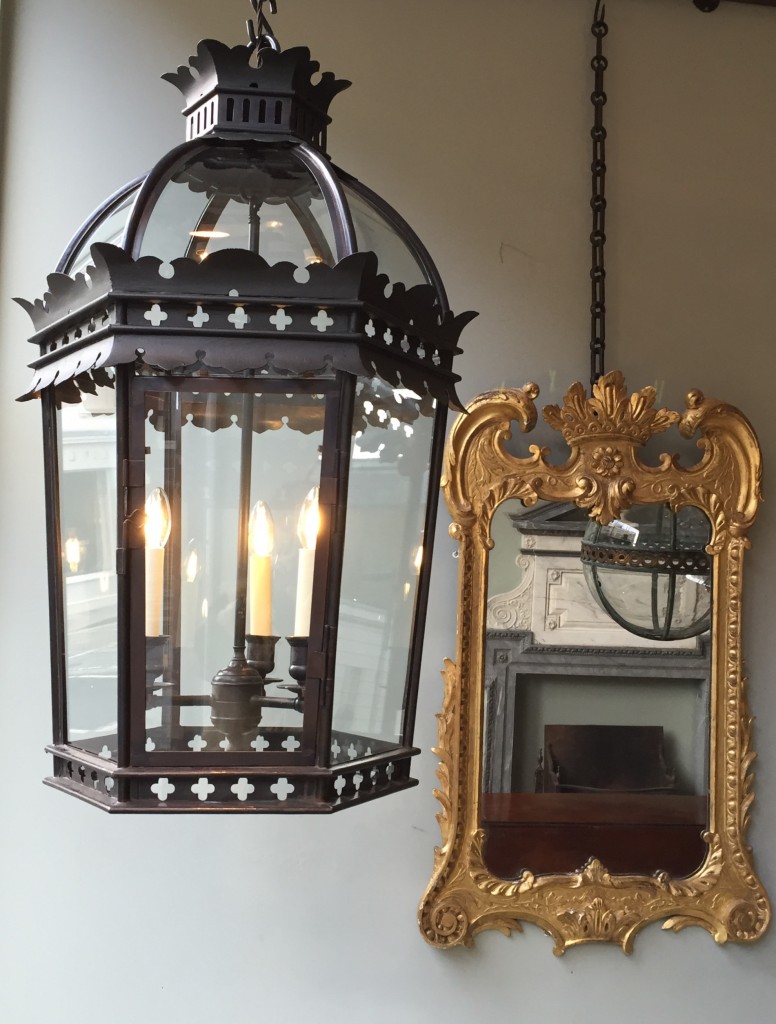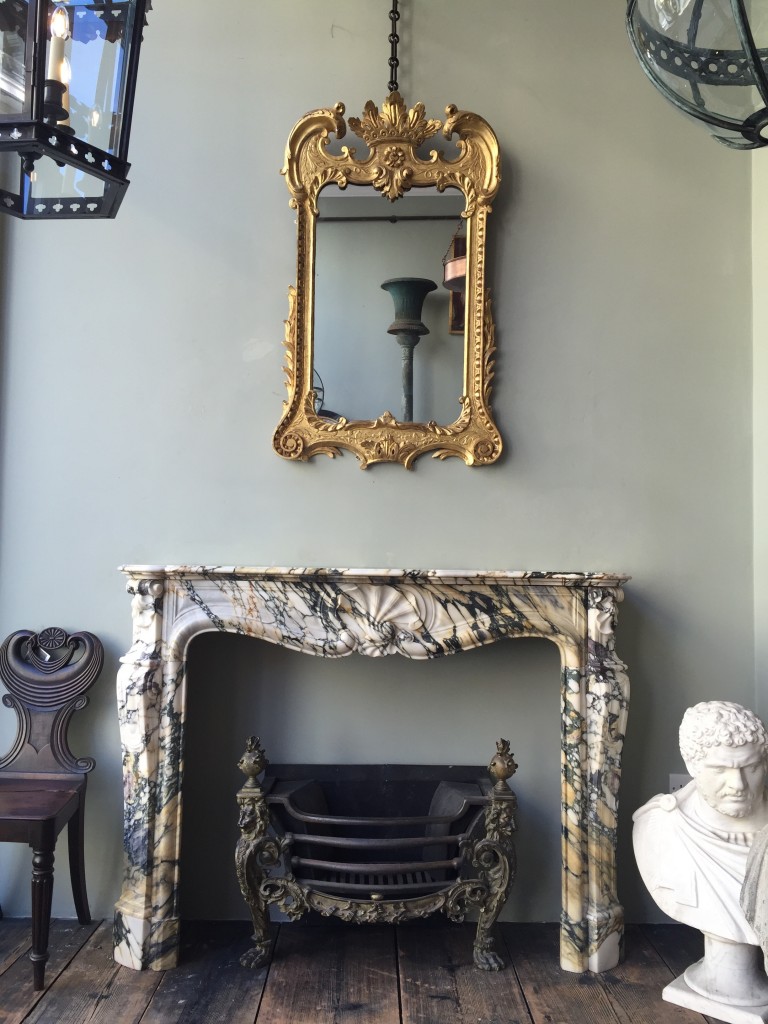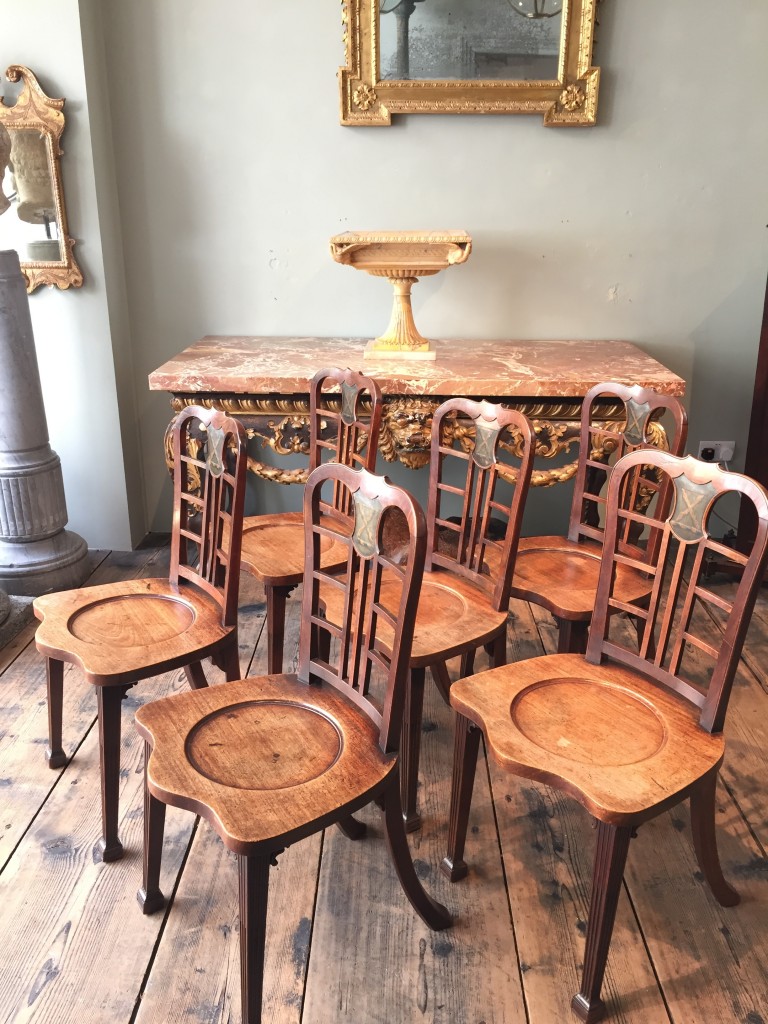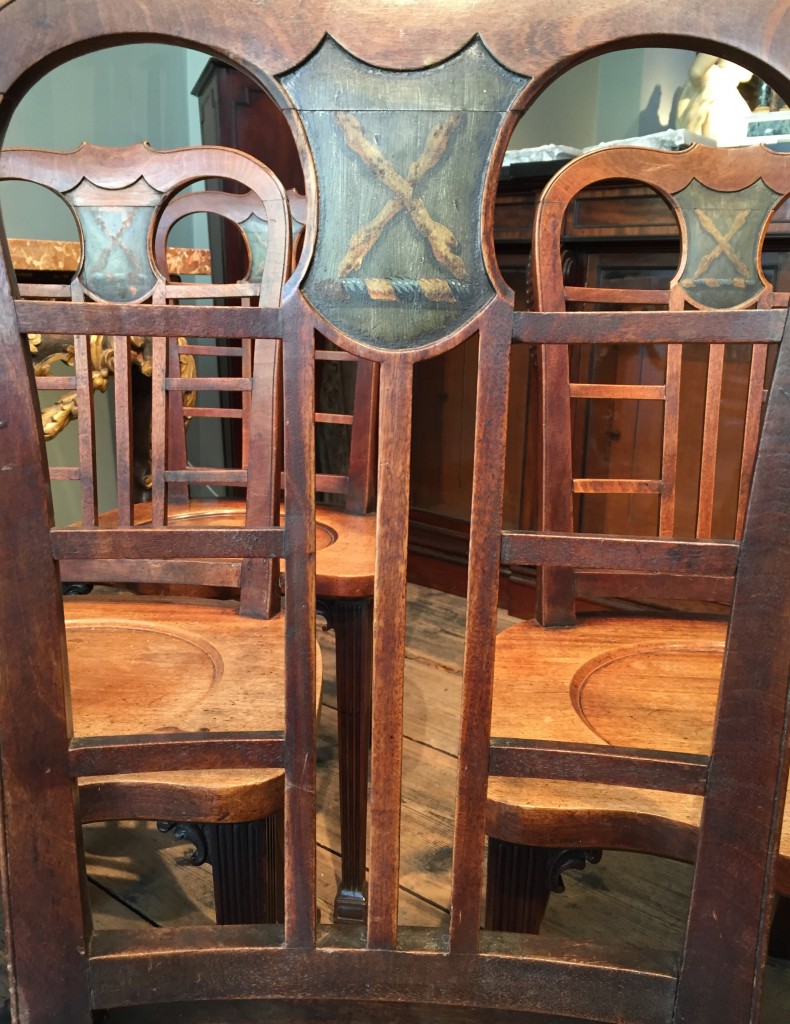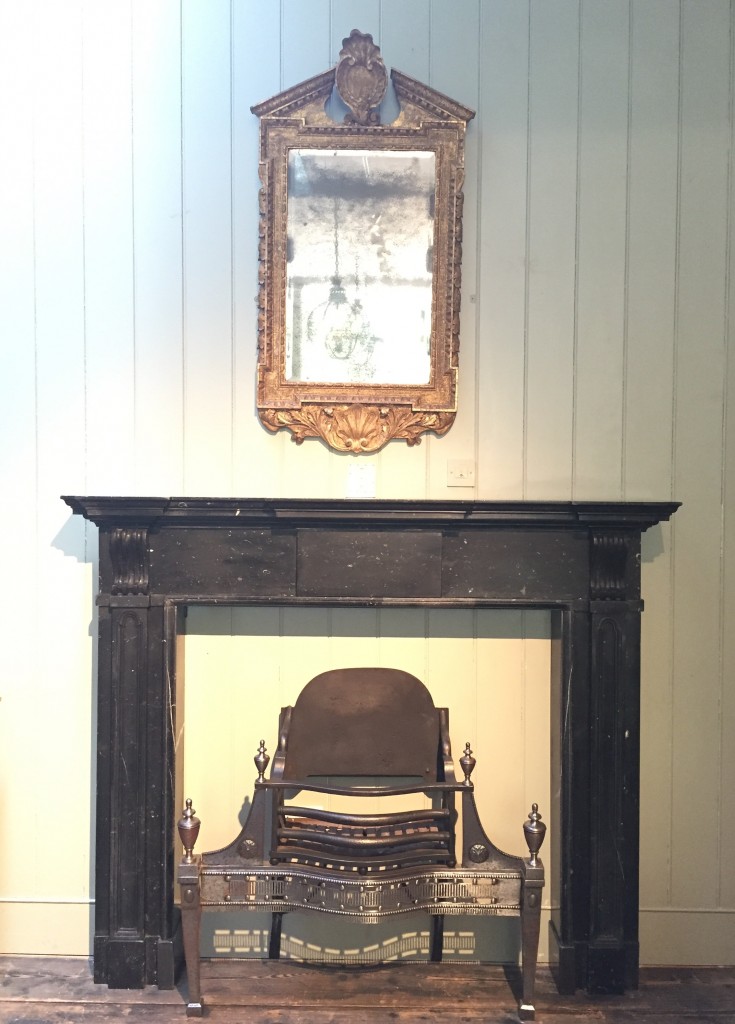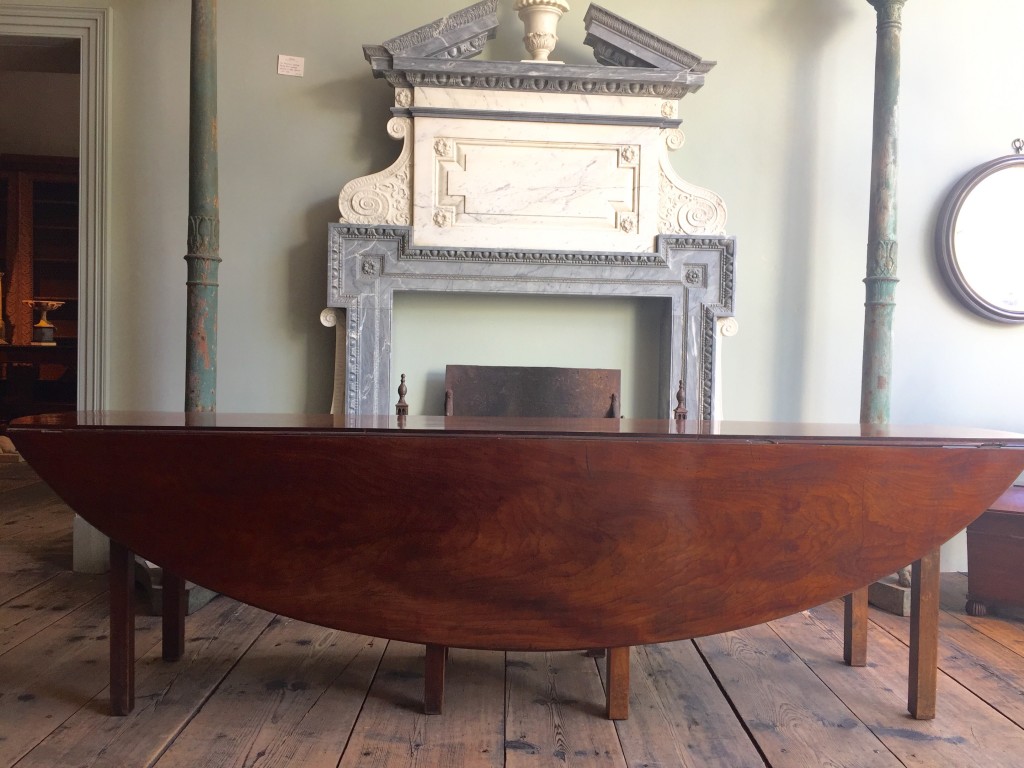This week fresh items have been filtering their way through to our London showroom on the Pimlico Road. Every day new antique and reproduction additions have arrived adding to our ever expanding collections.
The ‘Bridgen’ lantern is named after the designer and architect Richard Hicks Bridgen (1785-1846) who was apprentice to the cabinet maker and sculptor George Bullock. Bridgen ran his own business creating his characteristic Jacobean revival style designs in Birmingham between 1819-1825 – notably for the Jacobean estate Aston Hall. Self -promotion was not Bridgen’s forte and he may have been relieved when his wife inherited a Sugar Plantation in Trinidad where they went to live until the end of their lives.
The Bridgen is one of the largest hanging lanterns and is shown here in brown bronze but available in any finish.
Next to the Bridgin, stands an eighteenth century copy of a Louis XV chimneypiece. Carved in rich and expressive breche marble, it stands much lower than its English counterpart.
One of my favourite antique additions are a set of six George III hall chairs. They are austere, sophisticated and pure country house chic.
With shaped top rails above a pierced lattice back and serpentine dished seat the workmanship is of the highest quality and most likely by Thomas Chippendale or John Linnell. The Saltire illustrates the crest that united the Stackhouse, Pendarves and Wynne families. In the 1950’s the Elizabethan Pendarves House was demolished. When the house was being torn down, silver from previous ancestors was found buried in the walls.
Below a George II carved giltwood pier mirror now stands an archetypal Irish George III chimneypiece that I absolutely love. It is eighteenth century Kilkenny Black and the fusion of the rich dark material and the slendour but strong proportions is a fine example of the Irish venacular.
We have the most wonderful mid eighteenth century Irish hunt table, originally from Corby Castle in Northern Cumbria. The well figured oval drop leaf top table is one of the finest examples I have seen. The Cuban Mahogany top is exquisite and the unsually large scale is an impressive nine foot across.
It has a charm and its own character, with a bakelite bell that has been added in the twentieth century that members of the Howard family could have used to call the frayed butler. Maybe the bell has even been toyed with by the resident ghost, named the ‘radiant boy’? The Rector of Greystoke who came to stay at the castle in the early nineteenth century fled from the house after seeing the ghost. He described the following:“I beheld a beautiful boy, clothed in white, with bright locks resembling gold, standing by my bedside, in which position he remained some minutes, fixing his eyes upon me with a mild and benevolent expression. He then glided gently towards the side of the chimney, where it is obvious there is no possible egress and entirely disappeared.”
Whilst many of the great English County houses have been lost, the contents of the homes live on with the myths and stories that carry on through the centuries of time.









